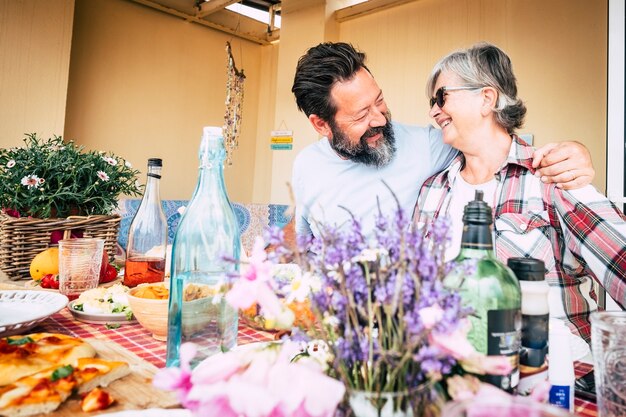Discovering Your Perfect Retirement Community: Embracing Activities You Love
Retirement is a new chapter filled with opportunities to pursue passions, hobbies, and interests that might have taken a backseat during the busy years of work and family responsibilities. As you transition into this exciting phase, finding a retirement community that aligns with your interests can greatly enhance your quality of life. With countless options available, how do you choose a community that offers activities you'll love? Let’s explore the various factors and steps that can guide you into making the perfect choice for your golden years.
Understanding Your Interests and Lifestyle
Reflect on Your Interests
Start by identifying activities that bring you joy and fulfillment. Retirement is a time to rediscover or deepen your connection with pursuits you love. Whether it's gardening, painting, swimming, reading, or yoga, pinpoint what makes you tick.
Prioritize Your Interests: Create a list of hobbies you are passionate about. Breaking it down into categories like social, physical, mental, and creative activities can be helpful.
Assess Activities You've Always Wanted to Try: Are there hobbies you’ve been interested in but never had the time to pursue? Retirement may be the perfect opportunity to explore these new trails.
Consider Your Lifestyle
Lifestyle compatibility is crucial when choosing a retirement community. Are you an early riser or a night owl? Do you prefer tranquil outdoor settings, or are you energized by bustling environments? Understanding your lifestyle preferences will help narrow down communities based on their atmosphere and activity schedules.
Researching Potential Communities
Identify Location Preferences
Deciding on a location is a primary factor in your search. Would you prefer to stay near family, relocate to a warmer climate, or settle in a locale known for cultural vibrancy?
- Proximity to Family: For many, being near children and grandchildren is a priority.
- Climate Preferences: Some retirees prefer the warmth and sunshine of the south, while others may choose locations that offer seasonal changes.
Explore Amenities and Facilities
An essential part of your research involves understanding the facilities and amenities offered by the community. Look for communities with:
- Activity Centers: Spaces that host workshops, classes, and group meetings.
- Wellness Programs: Access to fitness classes, gyms, pools, and healthcare facilities.
- Creative Studios: Areas dedicated to art, crafts, music, or theater.
Evaluate the Community Culture
Every community has a unique culture and rhythm. Visiting in person, if possible, can provide invaluable insight into:
- Resident Demographics: Who makes up the community? Are they like-minded individuals sharing similar interests?
- Community Engagement: How actively do residents participate in events and social opportunities?
Diving into the Activities
Types of Activities to Look For
When evaluating a retirement community, assess the variety and quality of available activities:
Physical Activities: Walking clubs, tai chi, water aerobics, tennis, and golf.
Creative Pursuits: Pottery, painting, music lessons, and photography classes.
Social Events: Game nights, movie screenings, themed dinners, and social clubs.
Educational Opportunities: Guest lectures, book clubs, or collaborations with local colleges for continued learning.
Volunteer Programs: Opportunities to give back to the community or participate in intergenerational programs.
Quality Over Quantity
A wide range of activities means nothing if they aren't well-organized or engaging. Look for communities with experienced facilitators, passionate volunteers, and high-quality materials and infrastructure.
Assessing What Truly Matters
Financial Considerations
Budget plays a significant role in determining where you'll live. Understand the cost structures of communities you’re interested in:
- Membership Fees: Monthly or yearly dues that cover facility access.
- Additional Costs: Charges for classes, events, or additional services.
- Financial Stability: Ensure the community is financially sound to avoid unexpected increases or deductions.
Evaluate Future Needs
While current amenities and activities are important, it’s equally critical to think long-term:
- Healthcare Access: Availability and quality of healthcare, including emergency services and proximity to hospitals.
- Accessibility and Adaptability: Does the community offer graduated living assistance options as needs change over time?
Taking Action: Making Your Decision
Visit and Experience
If possible, spend a few days visiting the communities at the top of your list. Participate in activities, talk to residents, and explore the local area. This firsthand experience is invaluable.
Discuss with Loved Ones
Involving family or close friends in your decision can provide support and perspectives you may not have considered. Sharing plans with those you trust ensures your peace of mind and solidifies the decision-making process.
Decision-Making Summary
Here’s a strategic summary to help guide your choices:
- Reflect on Personal Interests: What hobbies and activities are you passionate about?
- Assess Lifestyle Compatibility: Does the community align with your daily routine and energy levels?
- Research Thoroughly: Explore amenities, community culture, and financial aspects.
- Prioritize Future Needs: Consider long-term healthcare and accessibility.
- In-Person Evaluations: Experience the community firsthand by visiting and partaking in activities.
⭐️Tip: Stay open and patient throughout your journey. The perfect match is out there, waiting for you to uncover and embrace.
By carefully considering these factors, you can choose a retirement community that not only meets your needs today but also supports and enriches your lifestyle in the years ahead. Embrace this exciting search with confidence and joy, knowing that a fulfilling, active community is out there ready to welcome you.

Related Topics
- How To Adjust To Life In a Retirement Community
- How To Choose The Right Retirement Home
- How To Decorate a Retirement Apartment
- How To Downsize For Retirement Living
- How To Finance Your Move To a Retirement Community
- How To Find Affordable Retirement Living Options
- How To Find The Best Senior Apartments
- How To Make Friends In a Retirement Community
- How To Prepare For The Move To a Retirement Community
- How To Stay Independent In a Retirement Home